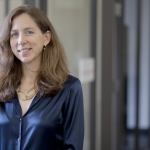
Kyle Dlabay
Grinding Gears for the Arts
Posted by Oct 21, 2014

Kyle Dlabay
 Kyle Dlabay
Kyle Dlabay
When you think about the performing arts, the first image that comes to mind probably isn’t thousands of cyclists. But in Milwaukee, bike riding and the performing arts have been connected since 1981 when the United Performing Arts Fund (UPAF) started the UPAF Ride for the Arts, sponsored by Miller Lite. Back then it was known as “Arts Pedalers,” then it grew immensely as “Uecker’s Ride for the Arts” and “Miller Lite for the Ride for the Arts.” The current name, which our title sponsor graciously agreed to in 2010, ensures the focus of the event is on its reason for being–to support the performing arts in Southeastern Wisconsin.
Founded in 1967, UPAF is an umbrella fundraising United Arts Fund with a threefold mission: 1) to raise much-needed funds to ensure entertainment excellence, 2) steward the dollars our donors so generously give, 3) promote the performing arts as a regional asset. As the single largest funder to 15 of the largest performing arts organizations in our region, including the Milwaukee Symphony Orchestra, Milwaukee Ballet, and Milwaukee Repertory Theater, UPAF is essential to sustaining the valuable asset that we have in the performing arts.
Read More

 Elissa Francis
Elissa Francis

 Emma Leggat
Emma Leggat



 Terry Liu
Terry Liu

 Sarah Bainter Cunningham
Sarah Bainter Cunningham

 Laura Perille
Laura Perille

 Mari Barrera
Mari Barrera

 Jon Hinojosa
Jon Hinojosa











































